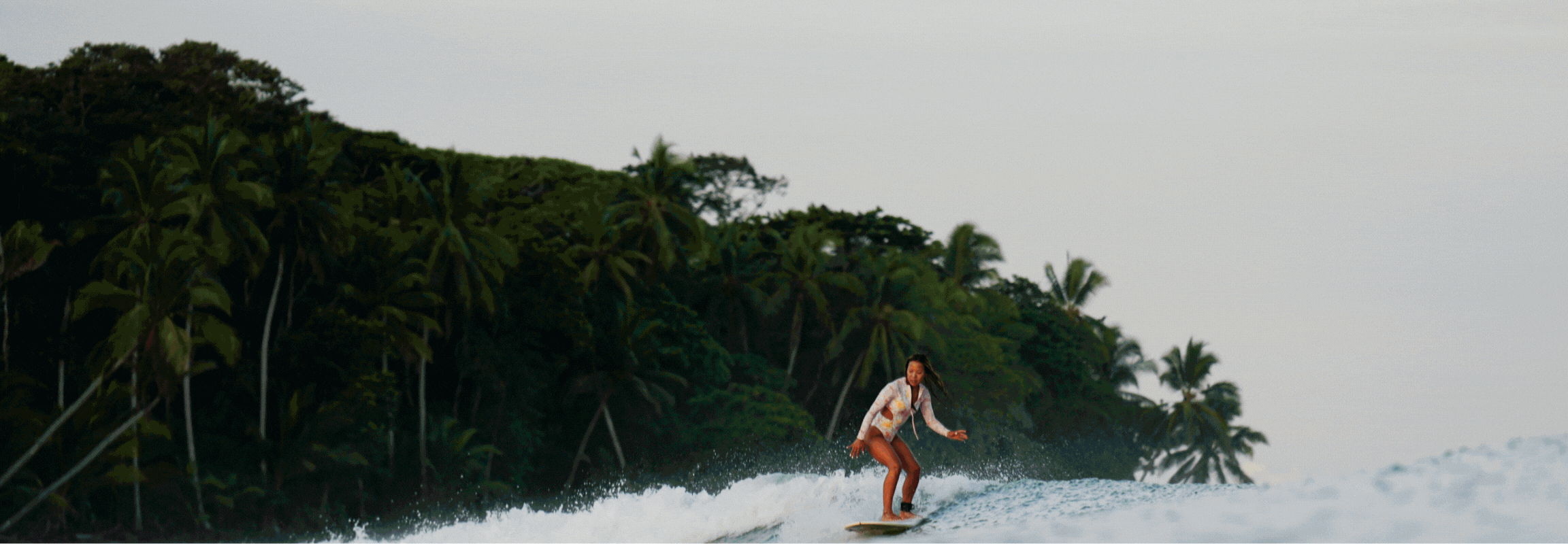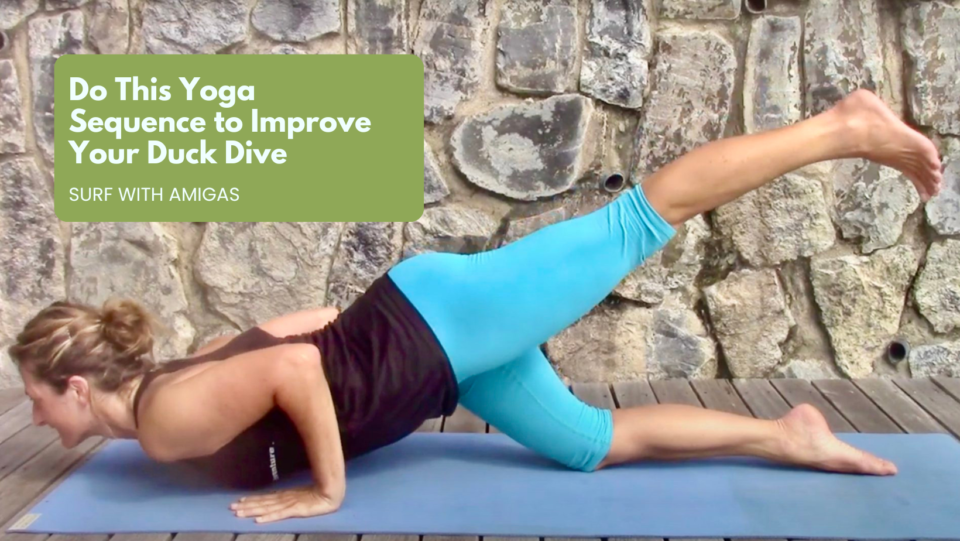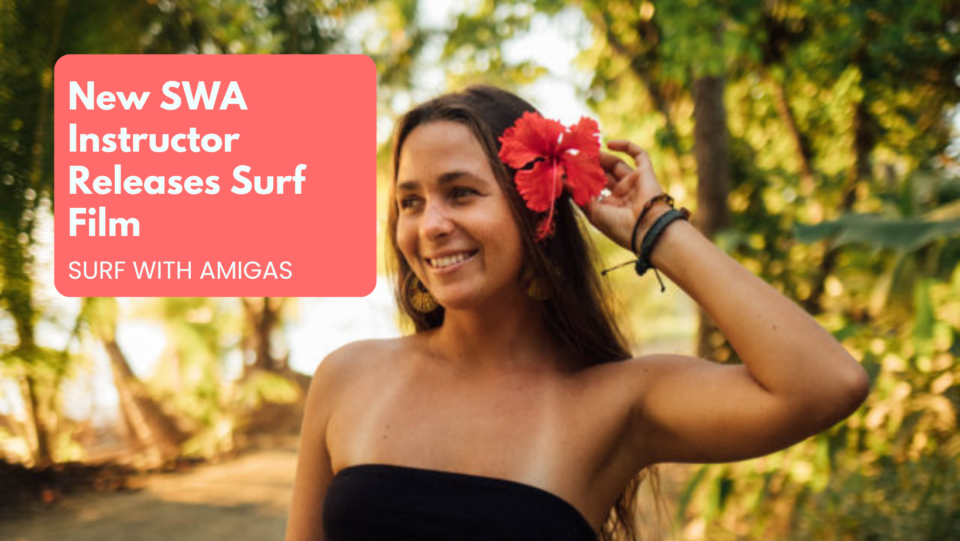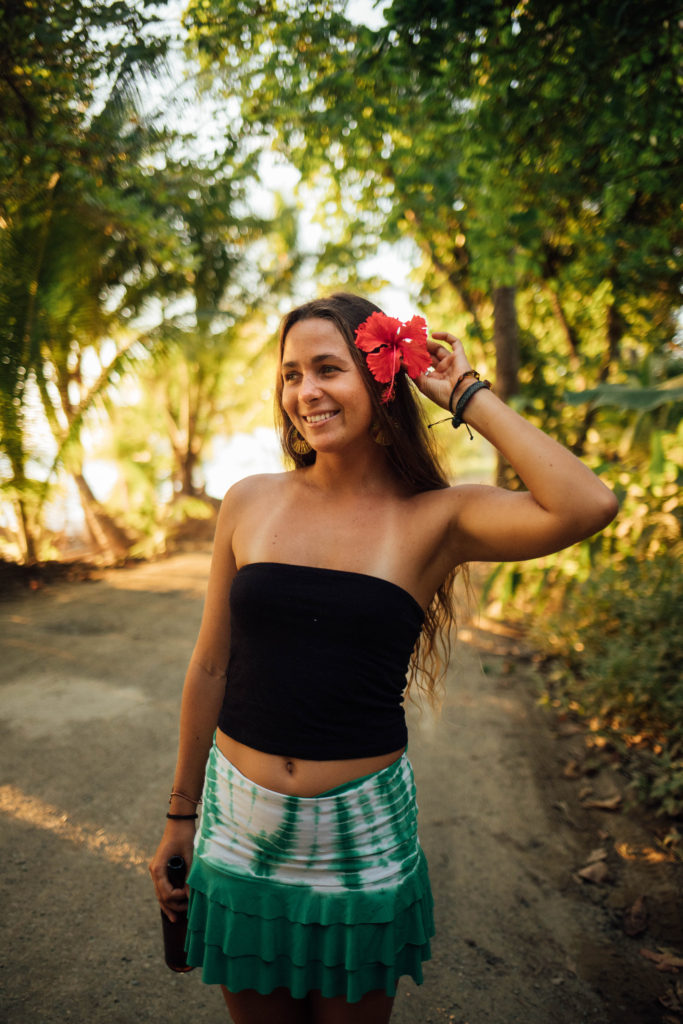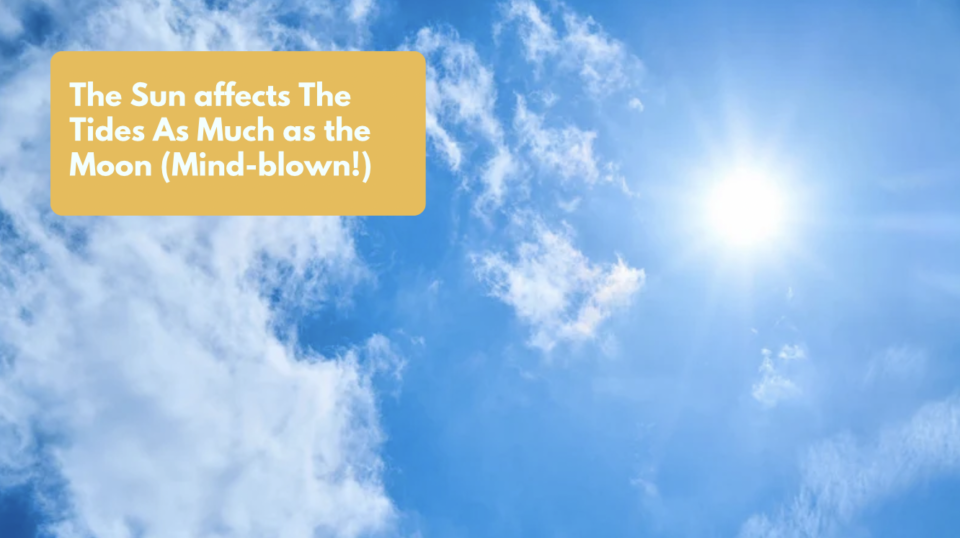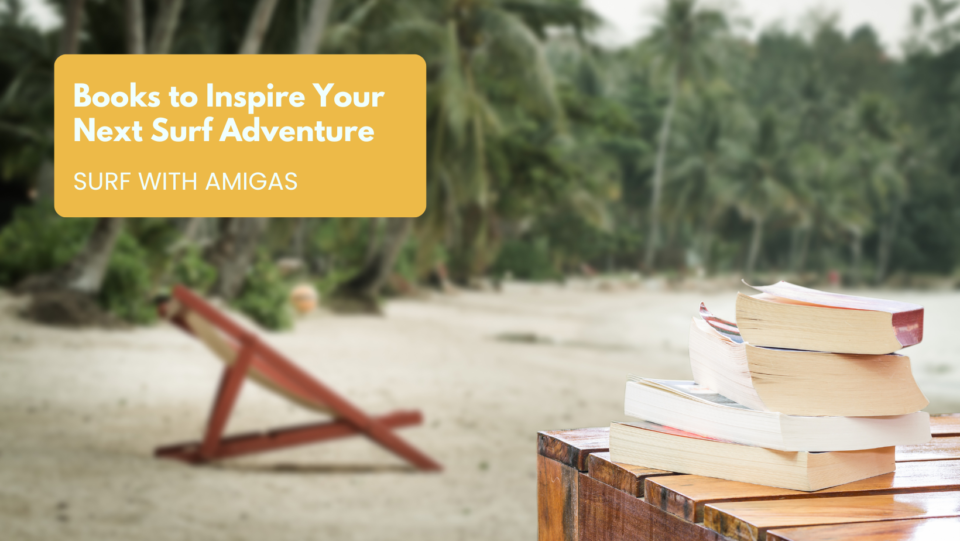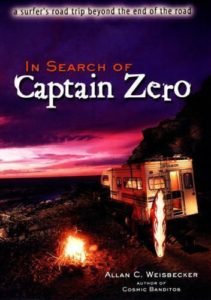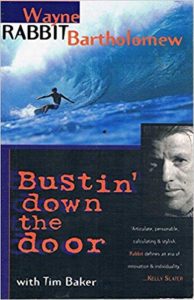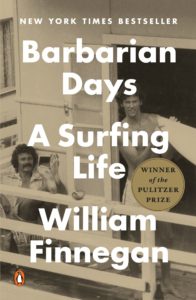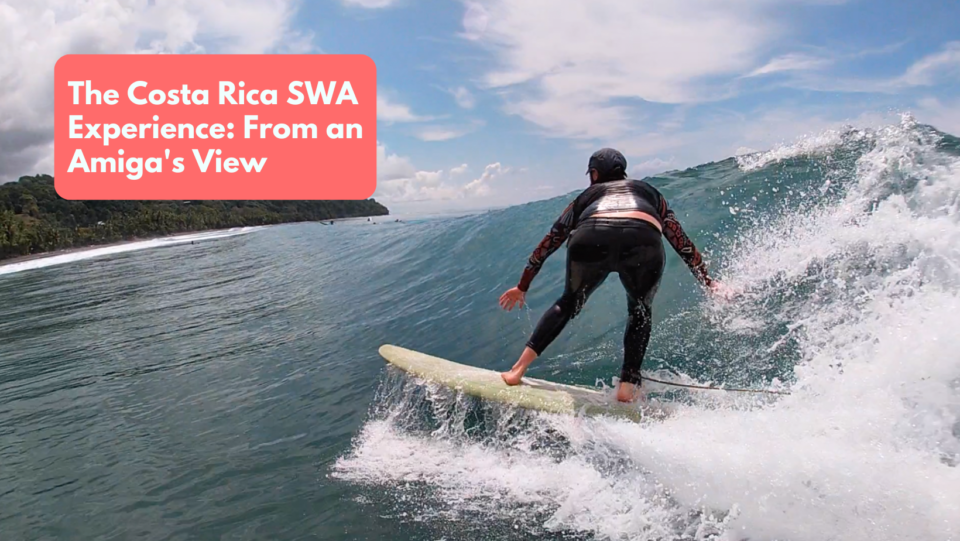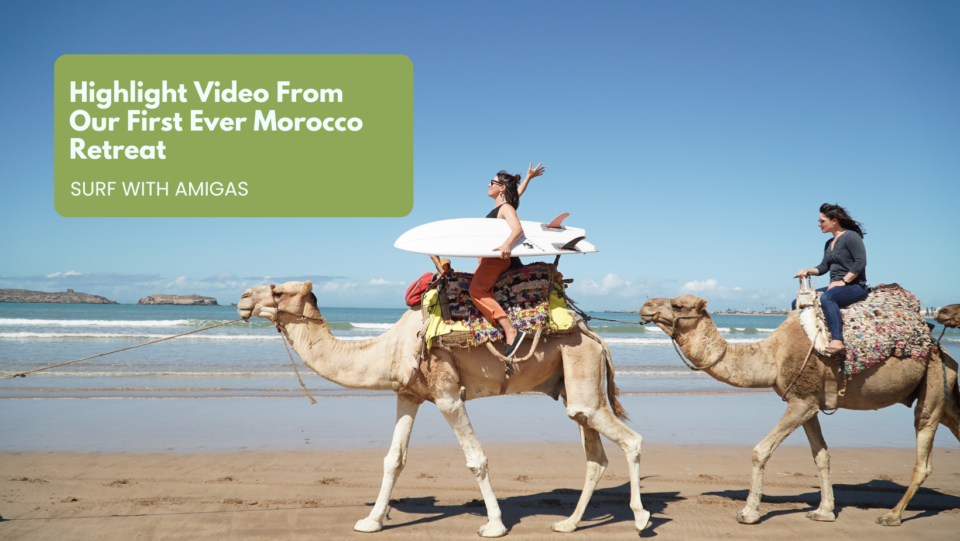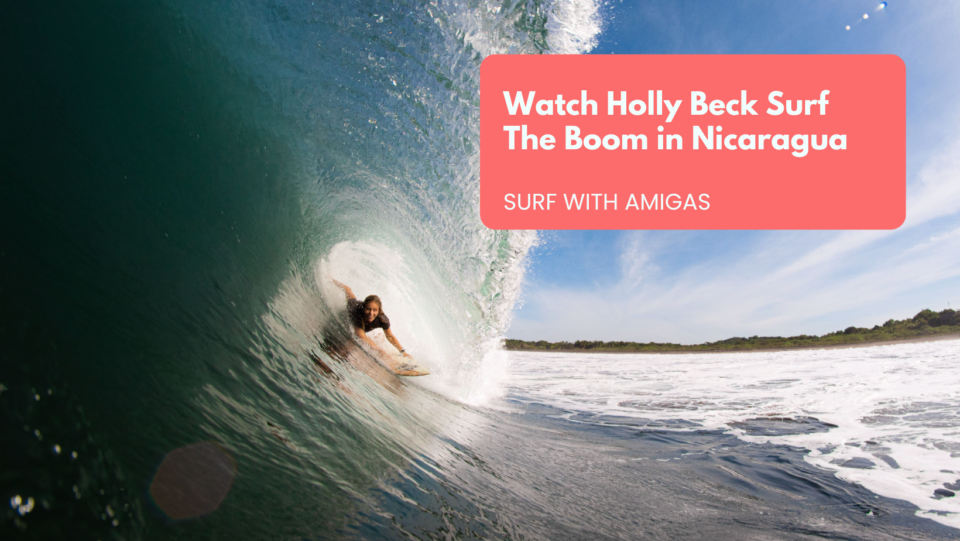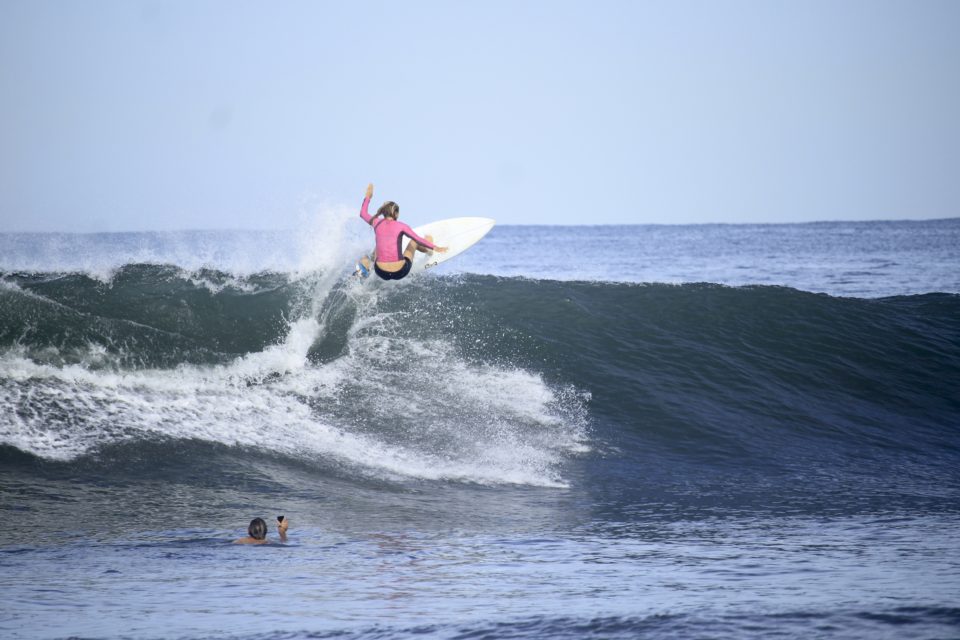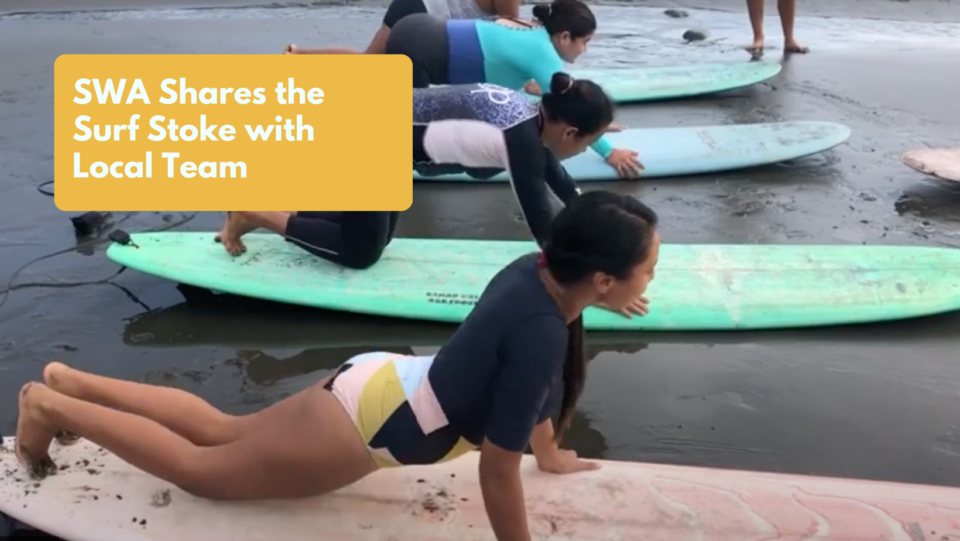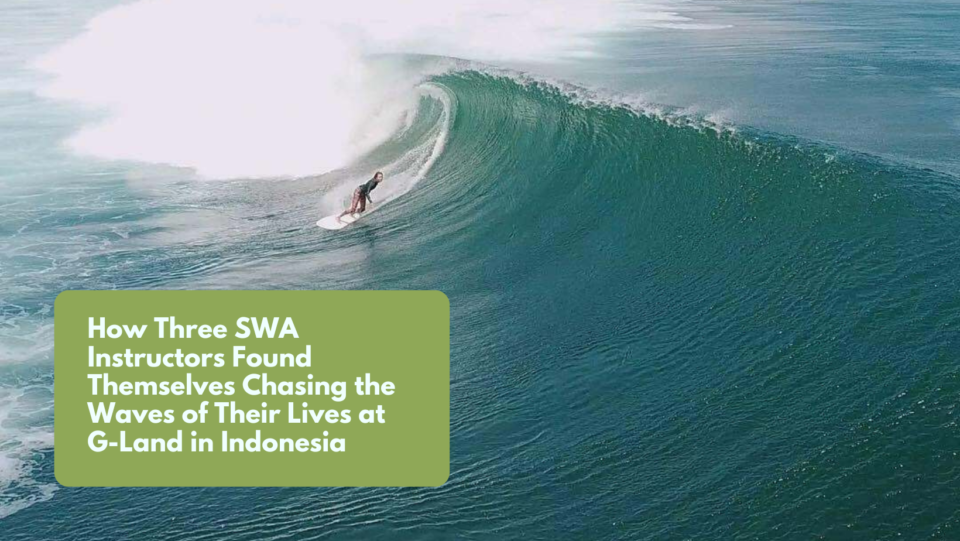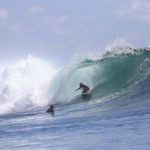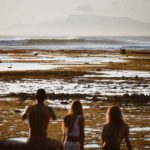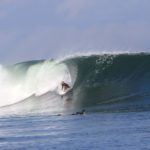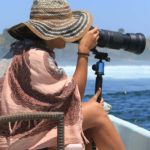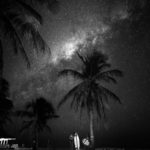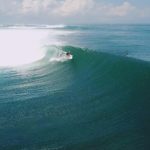We didn’t sleep that first night. The ground shook from the power of the crashing waves and when we finally walked down to the beach at first light, the bay was stacked to the horizon with perfect lines. We counted seven waves, each an identical copy of the previous, peeling perfectly along the point. A crew of older guys approached.
“Where are you girls surfing? Tiger Tracks? It’s a mellow right-hand point where the women and children surf,” they said. We told them no. We’d come to surf G-Land.
G-Land, off the coast of Java, was our promised land. There were three of us with our spirits synchronized and ready to venture to somewhere new: the exotic Delia Bense-Kang, part Mexican, Korean, and German, who’d grown up surfing the rough seas of Northern California and now works for the Surfrider Foundation. Then there was the gorgeous Silvia Yom, a well-traveled and talented filmmaker and photographer from Los Angeles. And myself, Alex Kelly, known as the fiery Spaniard, who, having finished my degree in Oceanography, started a surf school in southern Spain. We’d all connected by working for Surf With Amigas,an agency dedicated to inspire women in surfing and life through surf and yoga retreats.
As we boarded the fast boat full of dudes we could tell that it was a rare occurrence to see three single girls going to G-Land. Everyone was filled with anticipation, nerves, and hopes of scoring the waves of their lives. Picture perfect hollow barrels – big, long, and fast– with magical conditions were rumored for the next few days. The history and the vibe of transient surfers passing through to ride this dreamy barrel was palpable and the proof lay in a smattering of surf posters on the walls and broken boards strewn around.
In the morning the tide was too low to surf so everyone gathered to watch while sipping their coffee. Conversations consisted of contemplating what board to ride, best entry and exit strategy, where to sit. We did our best to eavesdrop and gather knowledge to build our plan of attack.
Excited but terrified, we eventually made it out…without actually realizing how big it was. With our eyes always set on the horizon we scratched over the top of the first set. There were a few older guys just charging and getting great rides. They didn’t look like they were in good shape but they were ripping. I felt so inspired by them. I was sitting the farthest out because I didn’t want to get worked on the inside and before I knew it, the horizon turned dark, signaling a huge set on the way.
I was too far out to catch any of the first waves that rolled in but the third wave was bigger and I knew I was in the perfect spot. I don’t know what got into me but something clicked and without thinking I just turned around and went for it.
For an instant, everything slowed down and every action and movement followed the previous one. I felt the lift and wind in my face as I cruised all the way down to the bottom of the wave. It started to suck up as it hit the reef and I tried to set my rail and get high to pass the section but it was too late and I wasn’t making it. I could feel the wave collapsing behind me so I straightened out to get as far away as I could from the lip. Then I waited to get hit by the avalanche of whitewater behind me. It slammed me down hard on the reef, but luckily butt first, and it bounced me right back up again. I grabbed the board and paddled back out for more. I caught another one right off the bat that aligned itself beautifully all the way into the channel.
As I paddled back out again I looked toward the lineup and saw a big one coming through. Everyone was eyeing it hungrily as one of the guys took off and ended up flying over the falls. Delia happened to be next in line and I yelled at her, “Send it!” She took off super late, made the drop, and disappeared into the barrel.
It all came together that day and we felt in tune with the ocean, catching one wave after another. The offshore wind was blowing into crystal-clear blue water, creating a wave you could only imagine in your wettest of surf dreams. Our friend Silvia was on the boat right in the lineup cheering and shooting the most epic surf shots. After a few days, we’d earned our places in the lineup and felt right at home with the crew at Bobby’s surf camp. And as all swell cycles come and go, so do these momentous life experiences. The trip confirmed our beliefs in taking life as it comes, to be open to whatever the world has to offer and live for what makes you feel alive and present. If you feel it, just send it.
Photos by Silvia Yom
